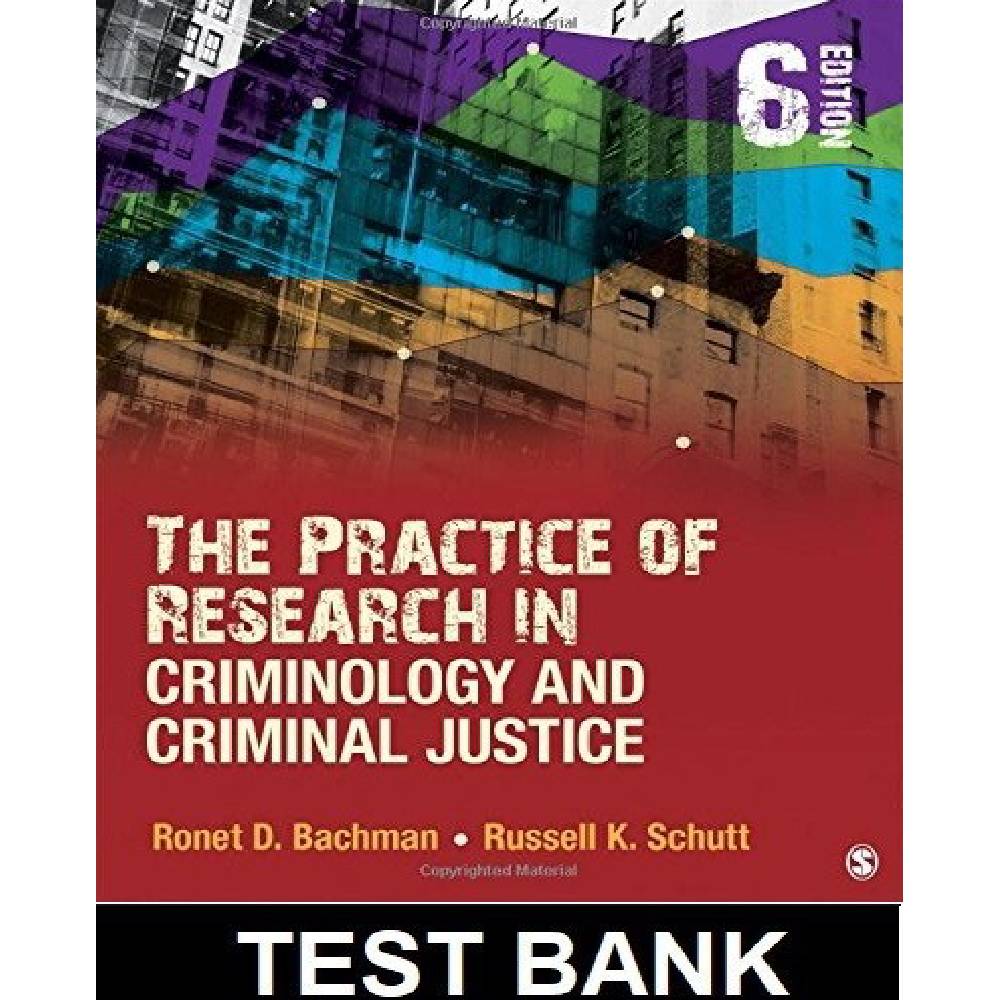Chapter 11: Evaluation Research
Test Bank
1. Applied research refers to:
a. Research that involves mixed methods
b. Interdisciplinary collaborations between researchers
*c. Research that has an impact on social policies
d. Research that involves secondary data
Section: Evaluation and Policy Analysis
Bloom’s Taxonomy: Knowledge
2. Evaluation research is:
a. A method of data collection
b. A type of sampling
c. A way to collect data
*d. Research conducted to investigate social programs
Section: Evaluation and Policy Analysis
Bloom’s Taxonomy: Knowledge
3. The goal of evaluation research is to:
a. Advance scientific knowledge
*b. Improve society
c. Encourage interdisciplinary research
d. Increase the ethical treatment of research subjects
Section: A Brief History of Evaluation Research
Bloom’s Taxonomy: Knowledge
4. Which piece of legislation was a catalyst for evaluation research?
a. War on Drugs
b. Vietnam War
*c. War on Poverty
d. New Deal
Section: A Brief History of Evaluation Research
Bloom’s Taxonomy: Knowledge
5. A researcher is evaluating the success of an anger management program. In evaluation research terms, attending sessions comprise the:
a. Inputs
b. Outputs
*c. Program process
d. Feedback
Section: Evaluation Basics
Bloom’s Taxonomy: Knowledge
6. All of the following are examples of stakeholders except:
a. Program staff
b. Clients
*c. Researchers
d. Clients’ families
Section: Evaluation Basics
Bloom’s Taxonomy: Knowledge
7. Which type of methods is commonly used in process evaluations?
a. Quantitative
b. Qualitative
*c. Quantitative and qualitative
d. Comparative
Section: The Evaluation of Impact or Outcomes
Bloom’s Taxonomy: Knowledge
8. Which of the following would be an example of a finding produced from a process evaluation?
a. An assessment could be done within the available timeframe and funding
*b. There is an issue in how clients are receiving the intervention
c. The program is successful
d. There is a need for this type of program
Section: Process Evaluation
Bloom’s Taxonomy: Application
9. All of the following are general types of evaluation research except:
a. Need
b. Process
c. Impact
*d. Improvement
Section: Evaluation and Policy Analysis
Bloom’s Taxonomy: Knowledge
10. A juvenile court is assessing the impact of a diversion program. This diversion program curtails the use of secure confinement and increases the use of informal sanctions for minor delinquents. The evaluation shows that keeping minor delinquents out of secure confinements would not significantly increase the crime rate. The crime rate would remain stable because there are very few juveniles who would be eligible to participate in the diversion program. A citizen who is concerned about wasting financial resources argues that before conducting an evaluation of impact, the researcher should have conducted an evaluation of:
*a. Need
b. Process
c. Efficiency
d. Knowledge
Section: The Evaluation of Need, or Needs Assessment
Bloom’s Taxonomy: Application












Reviews
There are no reviews yet.